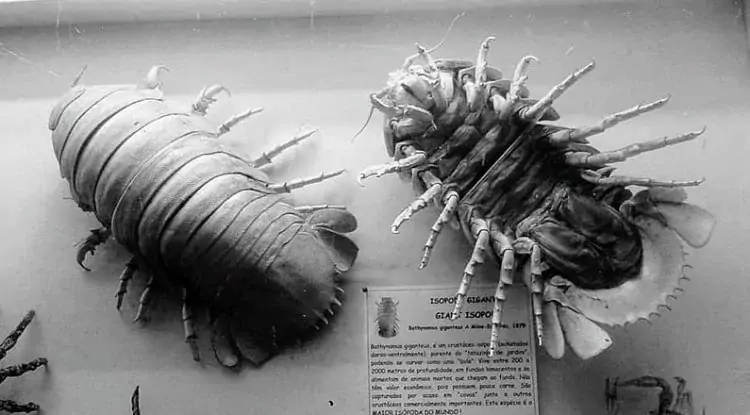Giant Isopod The Giant Sea Flea
Did you know? Giant Isopod or giant sea flea can fast without food for up to 4 years.

A zoologist from France named Altrees Milne-Edward 1879 described a genus of giant sea fleas with the scientific name Bathynomus giganteus. This was done after he discovered a unique species of fauna in the form of a Giant Isopod in the Gulf of Mexico.
This fauna species is one of about 20 species of large isopods. Generally, these fauna species only appear in deep and cold waters such as the Atlantic, Pacific, and Indian Oceans. The Giant Isopod, often called the giant sea flea, has a length ranging from 19 to 36 cm. Meanwhile, the weight can reach 1.7 kilograms.
Giant Isopods or giant sea fleas can roll their bodies into a ball with their hard shells facing outward; this is done to protect themselves from predators. The first part of the shell segment is joined to the head of this giant sea bug. Meanwhile, the rear shell segment forms a shield over the abdomen. This species is classified as a carnivore; these animals can survive four years without food. Isn't that great?
Unique Facts about the Giant Isopod
These giant sea fleas are important scavengers in the benthic environment of the deep ocean. Giant isopods are generally found in the dark sub-littoral zone at depths of 170 meters (560 ft) to the boundary of darkness with the bathypelagic zone at depths of 2,140 meters (7,020 ft), where the pressure at these depths is very high, and the temperature is very low, i.e., about 4 degrees Celsius.
But this species has also been found at shallower depths. This animal has been found at depths of 22 to 280 meters (72 and 919 ft). They are estimated to prefer a muddy or clay environment with a solitary lifestyle.
Even though it acts as a scavenger, this giant flea can also act as an active predator. These animals prey on slowly moving animals such as sea cucumbers, sponges, radiolarians, nematodes, and other deep-sea animals.
Even with the difficulty of finding prey in the deep sea, this giant sea bug can adapt by fasting for a long time, this species of fauna can survive more than four years without food, and when it encounters a food source, it will eat it very quickly.
These giant sea fleas are also believed to have a reproductive cycle that peaks in the spring and winter. This is due to a decrease in food sources during the summer. This species reproduces by laying eggs, considered the largest marine invertebrate with a diameter of up to 13mm.
If you are interested in Mina's discussion about the Giant Isopod, share this article with your friends so that you are not the only one who knows. Greetings of knowledge from Mina!
Image source: Giant Isopod Image | commons.wikimedia.org
